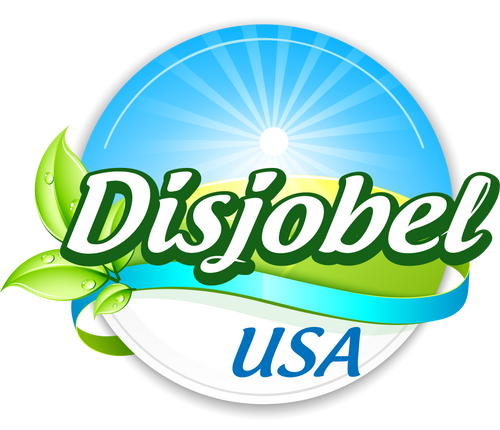Shortening, especially vegetal fat, is one of the most widely used ingredients in the preparation of baked goods. In addition to improving texture, its main function is accentuating the flavor and aroma. It also adds shine and does not require refrigeration.
What features must a margarine have to be used in food in the United States and Canada?
Specifications for Shortening in Industrial Baked Goods
Basic Properties
Margarine is made up of various vegetable oils that have gone through a hydrogenation process. Nutritionally, it is primarily constituted of unsaturated fats, which distinguishes it from animal fats such as butter, which are predominantly composed of saturated fats.
In general, more solid vegetable fats contain a higher proportion of saturated fats. This is more common in bar versions that are used to produce baked goods. In household use, on the other hand, spreadable margarine and liquid oils predominate.
One of the advantages of vegetable shortening is that, by replacing saturated fat with unsaturated fat, it reduces cholesterol intake. Thus, it is healthier than butter if it is of good quality.
What are the industrialized products typically made with this type of fat?
- Short dough.
- Donuts.
- Muffins.
- Pastry doughs.
- Cookies.
- Sweet and salty rolls.
- Tortillas.
- Pie crusts.
- Salty and sweet bread.
Appropriate Structure of Shortening
The various margarines available on the market have a diverse structure of saturated fat, salt and some fat-soluble vitamins. Vitamins A, D, and E are the most important.
The fat content should not exceed 10% of the RDA (Recommended Daily Allowance) for saturated fats. According to the FDA (Food and Drug Administration), shortening marketed in the United States must be free of trans fats.
Historically, this sort of fat was created from basic materials that were hydrogenated to transform their state from liquid to solid. However, the food industry is gradually changing this processing method because it is harmful to health.
Baking fats for bread items, on the other hand, must have a wide plastic range. In other words, they must melt in a wide range of temperatures, often between 24 °C and 42 °C. This favors two relevant properties:
- Fat is easy to handle and does not melt at room temperature.
- It blends well with different types of oils, margarines, and baking materials.
Proper Use of Shortening
The FAO (Food and Agriculture Organization) offers some guidelines for the proper use of shortening in bakery, pastry, and confectionery products:
- To avoid changes in product stability, the oleic acid melting temperature (16 °C) must be followed. The aim is for the fat to dissolve quickly when it comes into touch with the palate, avoiding a sticky bread feel.
- To improve the texture and structure of the product, soft and hard fats, such as cottonseed, soybean, or palm oil, can be combined.
- A nutrition label must be included on all products. The percentage of shortening classified as saturated, unsaturated, and trans fats must be specified on the label.
- The solidification process of vegetable fat must be carried out correctly to obtain a balanced ratio of large and small crystals. The "alpha" crystals provide a smooth texture to the product, while the "beta" crystals boost its flexibility and stability.
Practices to Be Avoided
Do you want to produce top-quality baked goods? These are the practices you should avoid during their manufacture:
- Constantly re-melting oils and fats, which can impart a foul flavor to products and is harmful to health. This practice increases the presence of free radicals in food. Instead, continuous operation is advised, which entails constantly adding fresh oil according to cooking needs.
- Trading shortening without official licenses. The FDA considers partially hydrogenated oil as a food additive. As a result, prior approval is required for any company to produce or export it.
- Use a material that has passed its expiration date, is in poor condition or has been contaminated with other ingredients. It is also not advised to "recycle" fats that have been frozen, thawed, and then refrozen for future usage.
- Use alternative products that are not properly labeled.
Recommendations for the Use of Shortening in Bakery
This is a versatile product that improves texture, flavor, and appearance in all types of industrial baked goods. However, to fully benefit from its characteristics, it must be used correctly:
- Choose the proper fat for each type of product to be processed and according to the cooking procedure. For example, safflower and sunflower oils are ideal for frying since they do not leave residues on the food surface due to their lower stability. The confectioner's fat, on the other hand, is semi-solid and adds firmness and creaminess to pastries and sweet baked goods.
- In industry, it is key to use oils and margarines continuously. This creates a water vapor layer that protects the baked foods' crust from oxidation.
- Observe the optimal melting, heating, and storage temperatures for each oil or fat. This will keep their original characteristics and keep them from becoming unhealthy.
- Certain oils can be winterized to eliminate solid crystals that form at low refrigeration temperatures. This helps to improve the texture of baked goods.
Carefully selecting your inputs, including shortening, is key to making excellent quality baked goods. Take this information into consideration and select the best option for your industrial products.
Bibliographic References
FAO. (s.f.).Capítulo 6 - Selección de usos de las grasas y de los aceites en la alimentación. https://www.fao.org/3/V4700S/v4700s0a.htm<0FDA.(2015).
La FDA pone un alto a las grasas trans en los alimentos procesados. https://www.fda.gov/consumers/articulos-para-el-consumidor-en-espanol/la-fda-pone-un-alto-las-grasas-trans-en-los-alimentos-procesados<0Zeratsky, K.(2023).
¿Qué producto para untar es mejor para el corazón: la mantequilla o la margarina?
Mayo Clinic. https://www.mayoclinic.org/es/healthy-lifestyle/nutrition-and-healthy-eating/expert-answers/butter-vs-margarine/faq-20058152





















